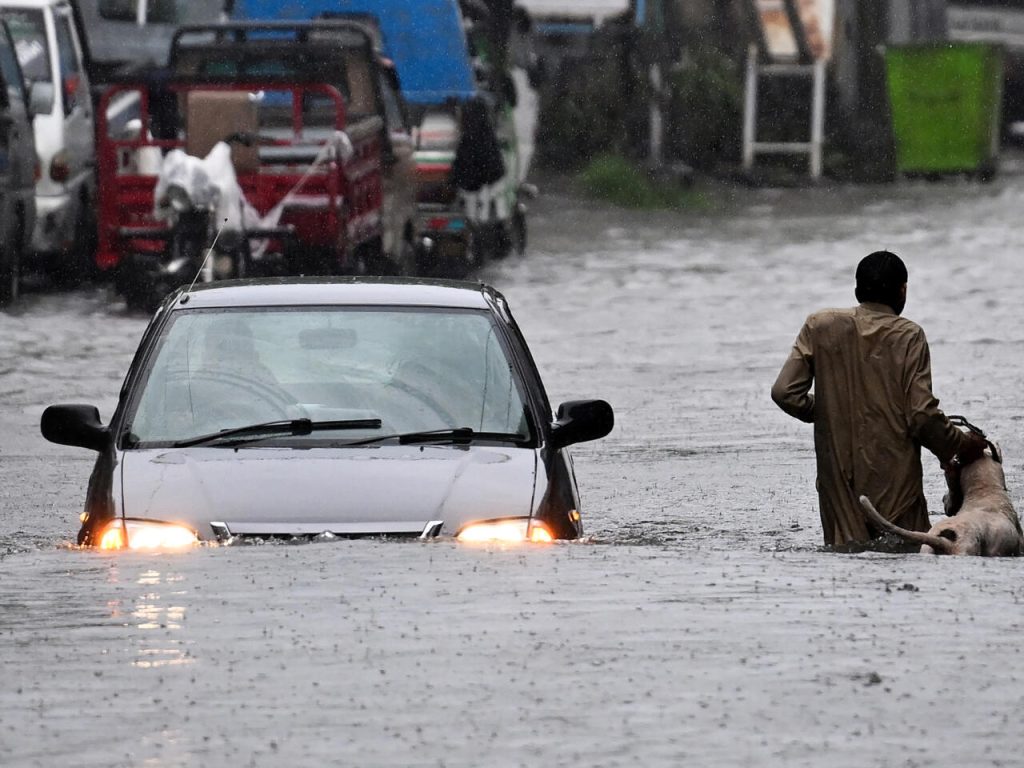Since late June 2025, Pakistan has been in the grip of an unforgiving monsoon season that has brought with it destruction on a scale rarely seen in recent years. Torrential rains and flash floods have resulted in a humanitarian crisis, with the National Disaster Management Authority (NDMA) confirming the tragic loss of 299 lives across the country. Among those killed are 140 innocent children whose lives were cut short by the devastating floods. In addition to the fatalities, more than 715 people have sustained injuries, many of them serious, leaving hospitals overwhelmed and families shattered.
Rescue and relief efforts have been ongoing across multiple provinces as government agencies, emergency responders, and humanitarian organizations attempt to navigate the chaos. Over 2,800 individuals have been rescued and relocated from high-risk flood zones. Emergency teams have braved treacherous conditions to ensure the delivery of vital relief supplies. More than 13,000 packages containing tents, food, water, hygiene kits, and life-saving equipment have been distributed to those affected.
The monsoon’s fury has left a visible mark on the country’s infrastructure. Thousands of homes have been impacted, with 1,676 reported as damaged and at least 562 completely reduced to rubble. Entire communities have been displaced, forced to seek shelter in schools, makeshift camps, or the homes of relatives. In rural areas, the destruction is amplified by the loss of livestock more than 428 animals have perished, further crippling already vulnerable agricultural livelihoods.
The monsoon’s intensity has not been uniform, but many of the worst-hit regions include Khyber Pakhtunkhwa, Punjab, Gilgit-Baltistan, and urban centers like Karachi and Islamabad. Flash floods and poor urban drainage systems have caused further complications in cities, while in mountainous areas, glacial melt has accelerated river overflows and landslides, endangering thousands more.
Weather forecasts had warned of intensified rainfall patterns throughout early August, which have now manifested into ground realities with deadly consequences. Authorities have been placed on high alert to prepare for more rain in the coming days, urging local administrations to proactively clear drains, evacuate low-lying regions, and maintain emergency operations round the clock.
This monsoon disaster has once again exposed the fragility of Pakistan’s climate resilience framework. While efforts have been made to install early warning systems and improve flood response mechanisms, the scale of destruction underscores that much more needs to be done. The country must prioritize sustainable floodplain management, investment in climate-adaptive infrastructure, and stronger institutional coordination to minimize damage in future weather events.
For the displaced and mourning families, the road to recovery will be long and difficult. As floodwaters recede in some areas and continue to rise in others, the challenge now is not just rescue, but rebuilding. Homes must be reconstructed, livestock replenished, schools reopened, and communities healed. This tragedy has also reopened discussions around environmental planning, emergency response, and the need for robust disaster financing mechanisms.
Pakistan finds itself at a critical juncture where natural disasters are no longer seasonal anomalies but recurring threats. The recent monsoon catastrophe demands urgent, unified action not only to respond to this calamity but to protect against the next.



Comments (0)
No comments yet. Be the first to comment!
Leave a Comment